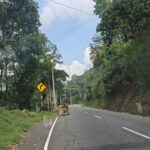Introduction
Nepal has long banked on hydropower as an economic lifeline. Nearly 99.8% of its electricity comes from hydropower. With an estimated 42,000 MW potential in its Himalayan-fed rivers, hydropower is envisioned not only to meet domestic demand but also to power exports for revenue. In fact, Nepal recently became a net electricity exporter, selling 1.94 billion kilowatt-hours (worth NPR 17.07 billion) last year and a landmark agreement with India aims to export 10,000 MW over the next decade. Yet this hydropower-driven future rests on a prominent foundation: climate change.
Glacial Retreat and Drying Rivers
Nepal’s hydropower largely depends on two water sources: glacial melt and monsoon rains. Roughly 32% of river flow in Nepal’s snow-fed rivers comes from glaciers and snow melt, and 68% from rainfall. This delicate balance is being disrupted by rising temperatures with Himalayan glaciers retreating dramatically. As they shrink, dry-season river flows decline because little ice remains to melt. In the short term, warmer temperatures can release extra meltwater, potentially boosting hydropower output by a few percent. One projection suggests Nepal’s hydropower potential might increase by approximately 5.7% by 2030 due to initial glacial melting. However, this is a temporary boon. By mid-century and beyond, continued glacier loss means far less meltwater in winter and spring. Experts warn that Nepal’s hydropower potential could drop by approximately 25% in the late 21st century as glacier-fed flows decrease.
Besides this, seasonal variability is already evident. Nepal’s power supply still swings widely between monsoon and winter. Installed hydropower capacity (about 2,800 MW in 2023) can easily meet demand in the wet months. Nepal even sold surplus electricity worth NPR 15 billion to India during last summer. But come winter, river levels plunge. Domestic generation dropped so steeply that Nepal imported power to cover approximately 30% of peak winter demand. Prolonged droughts and weak snowfall in recent years have made this worse. Especially during dry winter, the Nepal Electricity Authority (NEA) reported power output fell 20% below the winter average because there was virtually no rain and no snowmelt to sustain river flow.
Erratic Monsoons, Floods, and Sedimentation
The monsoon, Nepal’s lifeblood, has become increasingly erratic. Heavier downpours are triggering more landslides and flash floods, which can wreak havoc on hydropower infrastructure. In June 2023, an off-season torrential rain in Eastern Nepal caused flash floods that damaged 30 hydropower projects, with a combined capacity of 463 MW. This has torn up access roads, washed away intakes and turbines, and inflicted total estimated damages of NPR 8 billion.
Sediment is another peril. When a cloudburst dumped 540 mm of rain in 24 hours over central Nepal in 1993, it triggered massive landslides that choked the Kulekhani reservoir with sediment. Nepal’s only large storage plant at the time lost a significant portion of its capacity overnight. More recently, run-of-river plants have also struggled with silt. During every monsoon, swollen rivers like the Marsyangdi and Arun turn chocolate brown with sediment, forcing plant operators to shut turbines to avoid abrasion damage. The Jhimruk hydropower plant, for example, had to develop special sediment handling techniques after monsoon bedload caused repeated turbine erosion. Increased sedimentation not only cuts into generation but also shortens the lifespan of dams and machinery. Climate projections suggest that with more erratic and intense rainfall, sediment loads will rise which will result in more costly countermeasures such as those improved catchment management, sediment flushing systems, and more frequent dredging.
Another acute risk is catastrophic flooding from the mountains such as Glacial Lake Outburst Floods (GLOFs). A stark case example of this was the Upper Bhotekoshi Hydropower Project (45 MW) in Nepal’s Dolakha district. In July 2016, a glacial lake or landslide dam burst across the border in Tibet. The unleashed floodwaters surged down the Bhote Koshi valley and swept away the entire power plant. The destruction was near total, with damage estimates around USD 407 million. Unfortunately, Upper Bhotekoshi was not an isolated incident: a review found that 34 hydropower projects in Nepal were damaged by floods or landslides between 2015 and 2020.
Economic Impacts: From Exports to Investor Confidence
The stakes for Nepal’s economy are high. The government has accorded top priority to hydropower development, aiming to harness about 15,000 MW by 2030, with international support, under its climate commitments. Much of this new capacity is geared towards export markets in India and beyond. In the past two years, those ambitions have started to materialize: Nepal earned over NPR 17 billion (USD 130 million) from electricity exports in 2023 and expects up to NPR 27 billion the coming year as export volume rises. Climate volatility threatens to undercut these gains. If rivers run unpredictably low in the dry season or if infrastructure is knocked out by floods, Nepal could struggle to meet its export commitments. During the winter dry months, Nepal still had to import almost as much power (1.91 billion units) as it exported in the wet season. A severe drought year could flip Nepal back to a net importer. There is also the question of investor confidence. Hydropower projects are capital-intensive ventures with decades-long payback periods. Investors, whether private companies or development banks, require some certainty that plants will operate as expected. Project developers now face higher insurance premiums and tighter due diligence requirements related to climate risks. Lenders like the International Finance Corporation (IFC) have begun conducting climate risk assessments for Nepali hydropower schemes to model how changes in flow and sediment might affect long-term output. If climate adaptation measures are not built in, future projects could struggle to secure financing. In extreme cases, climate-exacerbated disasters could even scare off potential investors.
Building Climate-Resilient Hydropower: Recent Initiatives
Climate-Smart Planning and Data
The government’s Water and Energy Commission Secretariat, in partnership with researchers, has launched efforts to develop guidelines for climate-resilient hydropower design and operation. This involves improving hydrological data, glacier monitoring, and incorporating climate model scenarios into project planning. A recent workshop in April 2024 under the ICIMOD “GEM-Nepal” project discussed gaps in climate risk management and aims to produce standard practices so that new projects account for future variability. Better data and early warning systems can significantly reduce damages.
International Support
Development partners have stepped in with financing targeted at climate resilience. In 2023 the World Bank approved an USD 80 million support package, as part of a USD 100 million project, to bolster Nepal’s water resource management and make hydropower and water services more climate-resilient. This will help improve integrated water resources management across vulnerable basins and strengthen institutions at federal and local levels. Additionally, at COP28 in late 2023, the World Bank and Asian Development Bank (ADB) signed a cooperation agreement to jointly support Nepal’s hydropower development, explicitly highlighting climate change and sustainability goals.
Domestic Reforms
Nepal’s energy authorities are also pivoting policies toward resilience. The NEA has begun prioritizing storage-type projects after decades of favoring run-of-river. The 140 MW Tanahun Hydropower Project which is also Nepal’s first major reservoir project in over 35 years is aimed for completion by 2026. Its reservoir will store monsoon runoff and ensure at least six hours of supply on dry days. Meanwhile, the Department of Hydrology and Meteorology is expanding its network of weather stations and sediment monitoring which will improve flood forecasting and operational scheduling of power plants. Nepal’s recently drafted National Adaptation Plan also lists energy infrastructure protection and flood control as key priorities.
The Way Forward: Policy Priorities
Integrated River Basin Planning
Nepal should also adopt a river basin approach to hydropower development. This means coordinating dam operations, irrigation, and flood control across entire watersheds. River basin plans can map climate vulnerable hotspots and guide infrastructure accordingly. However, the river basin approach is relatively unfriendly to the local ecosystem as it disrupts it. Basin=level sediment management can reduce siltation of hydropower plants. Crucially, basin planning must incorporate climate models such as anticipating that winter flows may decline and flood frequencies may rise. The goal is to optimize water use in wet years and ensure minimum flows in dry years through storage.
Invest in Storage and Multipurpose Reservoirs
As the Tanahun project illustrates, storage-based hydropower is vital to climate resilience. Run-of-river projects alone cannot ensure reliable supply during increasingly unpredictable dry seasons. Nepal must accelerate the development of feasible reservoir projects not only for electricity, but also for irrigation and flood control. Reservoirs capture monsoon excess and release it when it’s needed for electricity generation. Even medium-sized storage can substantially firm up dry-season generation. For example, Tanahun’s 300 million cubic meter reservoir will allow it to run at peak capacity during critical hours of the winter. Policymakers should thus incentivize storage projects through appropriate tariffs and public-private partnership models. Careful social and environmental assessments are needed, since big dams can displace communities however, with inclusive planning it can be a net boon.
Diversify the Energy Mix
Over-reliance on a single source is risky. It is prudent to diversify into other renewables such as solar and wind, which can complement hydropower. Solar power, for instance, peaks in the dry season when hydropower is weakest. Nepal enjoys 300 sunny days a year on average. Similarly, wind potential exists in certain hilltops like in the Kali Gandaki valley. By 2030, Nepal’s energy plan envisions at least 5–10% of generation from solar, wind, and bioenergy. Achieving or exceeding that target will provide a buffer during drought induced power dips. Moreover, distributed solar can reduce strain on the grid when hydropower falters. Diversification also brings resilience to price shocks and import dependency; for example, avoiding costly electricity imports in winter.
Climate-Proof Infrastructure
Existing and future hydropower facilities must be engineered and operated with climate extremes in mind. This includes updating design standards: dams and spillways should accommodate higher flood frequencies; powerhouses should be sited and constructed to withstand landslides and debris flows; and transmission lines should be routed to avoid flood plains. An example can be seen with the Mandu project, where its powerhouse along with the switch yard was swept away by the floods last year. With better meteorological forecasting, operators can lower reservoir levels preemptively when extreme rainfall is predicted to reduce flood pressure. Nepal is now expanding glacial lake monitoring and negotiating data-sharing with China so that operators downstream get timely warnings.
Financial and Policy Instruments
The government can also encourage climate resilience through smart financial incentives and regulations. For instance, it could mandate climate-risk screening for all new hydropower projects during licensing. Insurance mechanisms could also be made better; perhaps a national disaster insurance pool so that individual projects aren’t crippled by one disaster. Similarly, creating a Hydropower Resilience Fund, with support from development partners, could help finance protective works and post-disaster reconstruction. On the policy side, Nepal’s power trade agreements should incorporate force majeure clauses and flexibility for climate-induced shortfalls.
Mahim Shrestha is a Business and Entrepreneurship student at Babson College, Massachusetts, USA. His interests lie in economic development, investment strategy, and fostering innovative business models that drive growth in emerging markets.





